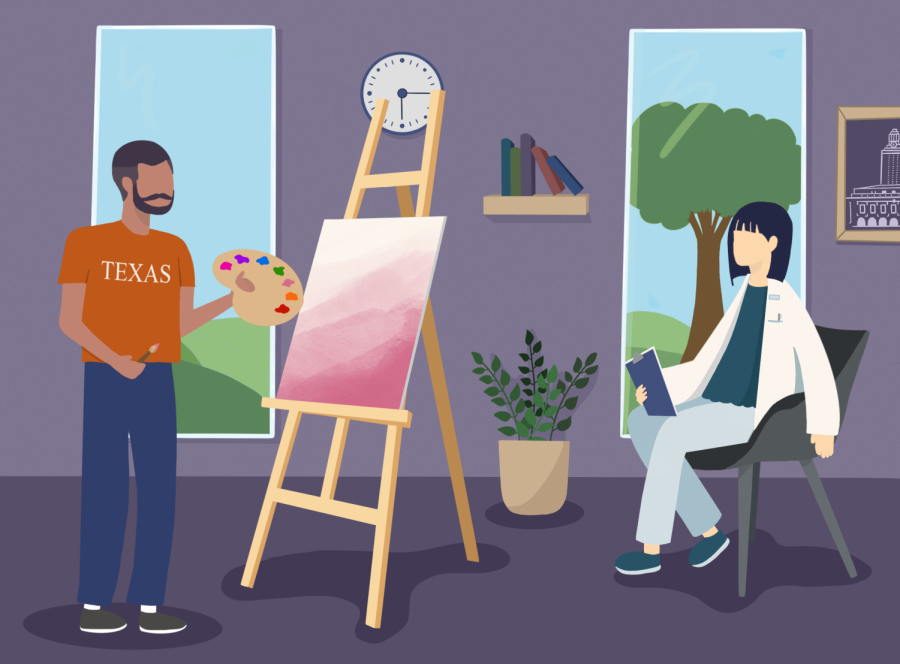CMHC, diversify your therapy practices
August 25, 2022
The Counseling and Mental Health Center offers services that revolve around psychotherapy, commonly known as talk therapy. While conventional talk therapy may work for some students, it might not fit other students’ needs.
To further help students with their mental health needs, the CMHC should diversify its therapy practices to include non-talk therapies such as art, dance and music interventions during counseling sessions.
According to the Mayo Clinic Health System, up to 44% of college students have depression and anxiety. Having additional and diverse therapies, like art therapy, would allow students to better process their emotions through their counseling sessions.
If students don’t feel like speaking about their problems with their therapist or counselor, they should have other sources of creative outlets available to help. Therapies like art, music and dance allow for students to channel their feelings into their interests.
“I feel like art is not only something that will distract you from whatever stress you’re going (through) during the day. It’s also a mode of self expression and releasing your emotions,” said Nikita Madhavaram, health promotion and behavioral science junior and co-director of the UT Student Government Mental Health Agency. “We want students that are excited to be in class, in their organizations and also feel taken care of, so providing different forms of therapy, including art therapy, is very important in that sense.”
Although these methods are very individualized, having alternative therapies would help reach students and make them more comfortable in sharing their feelings with others. These various therapies would also create a comfortable space for students who might need different interventions than talk therapy.
In the past, the CMHC has provided alternative interventions to students in group workshops and at a Universitywide level. Yoga workshops were created in hopes that it would encourage more students to channel their feelings into different outlets.
Marla Craig, senior associate director for clinical services at the CMHC, believes that introducing new types of therapies is a good idea but expressed concerns over funding.
“We’re always trying to figure out (and) make sure that one of our counselors (is) able to address (students’) concerns, whether it’s individual counseling (or) in group and workshop format,” Craig said. “I think we just want to make sure that we have staff that feel confident in providing those services. But, we’re always open to new ways of serving our students.”
The CMHC should continue to adapt and create other alternative services for its students in counseling sessions. Students should be able to feel like they have a choice in their counseling and are not just given the default option.
Ramos is a journalism sophomore from Laredo, Texas.











